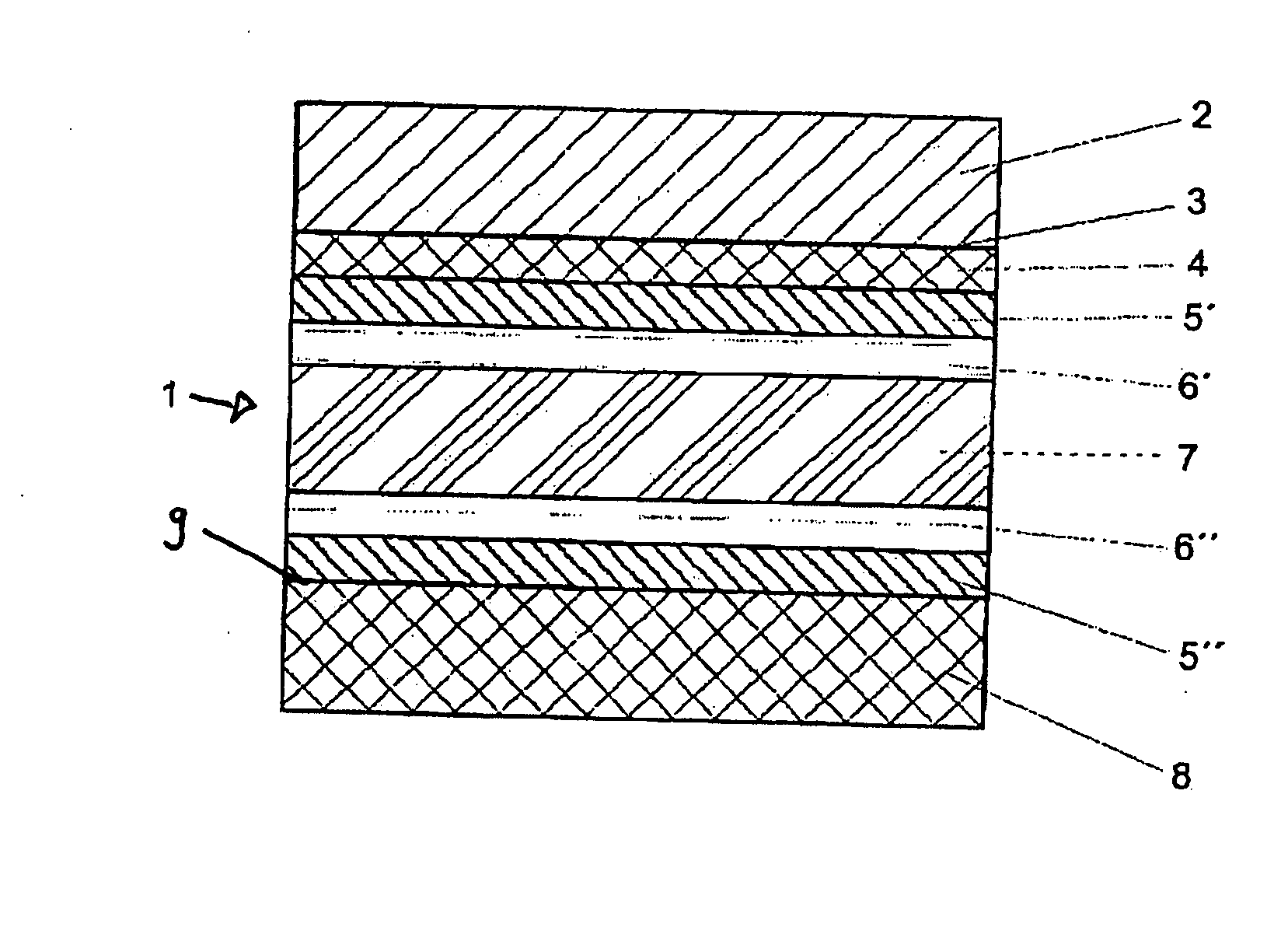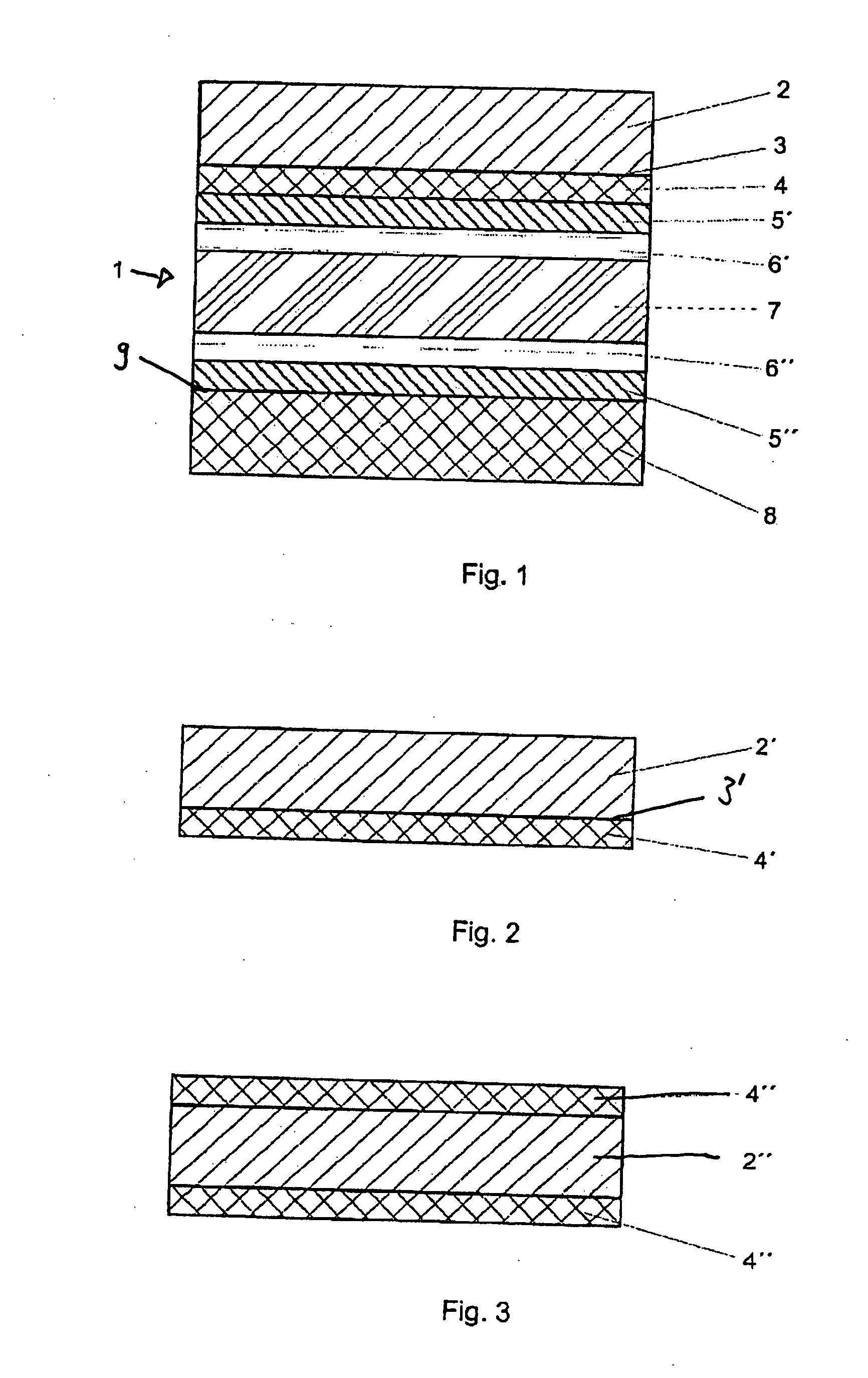Adhesive bonding arrangement for adhesively bonding two structural elements and method for producing an adhesive bond between two structural elements
a technology of adhesive bonding arrangement and structural elements, which is applied in the direction of adhesive process with surface pretreatment, light beam reproducing, instruments, etc., can solve the problems of increasing the weight of the aircraft structure, reducing the fatigue resistance properties, so as to achieve the effect of cost-effective pretreatmen
- Summary
- Abstract
- Description
- Claims
- Application Information
AI Technical Summary
Benefits of technology
Problems solved by technology
Method used
Image
Examples
Embodiment Construction
[0031] In the figures of the drawing, like designations refer to like components, or functionally similar components, so far as nothing to the contrary is specified.
[0032]FIG. 1 illustrates an exemplary adhesive bonding arrangement 1 according to an exemplary embodiment of the present invention. A first structural element 2 of a lightweight structure 40, which is exemplarily shown in FIG. 4, comprises a titanium alloy. On its surface 3 which faces the adhesive bond, the structural element 2 is provided with a coating 4, which is preferably applied by plating. The coating material is advantageously selected in such a way that it corresponds to the material of the second structural element 8 which is to be adhesively bonded to the first structural element 2, in the present case as an aluminium alloy, for example.
[0033] The coating 4 according to the present exemplary embodiment comprises an oxide layer 5′, which the aluminium alloy forms on its surfaces which are exposed to the atmo...
PUM
| Property | Measurement | Unit |
|---|---|---|
| diameter | aaaaa | aaaaa |
| diameter | aaaaa | aaaaa |
| diameter | aaaaa | aaaaa |
Abstract
Description
Claims
Application Information
 Login to View More
Login to View More - R&D
- Intellectual Property
- Life Sciences
- Materials
- Tech Scout
- Unparalleled Data Quality
- Higher Quality Content
- 60% Fewer Hallucinations
Browse by: Latest US Patents, China's latest patents, Technical Efficacy Thesaurus, Application Domain, Technology Topic, Popular Technical Reports.
© 2025 PatSnap. All rights reserved.Legal|Privacy policy|Modern Slavery Act Transparency Statement|Sitemap|About US| Contact US: help@patsnap.com



